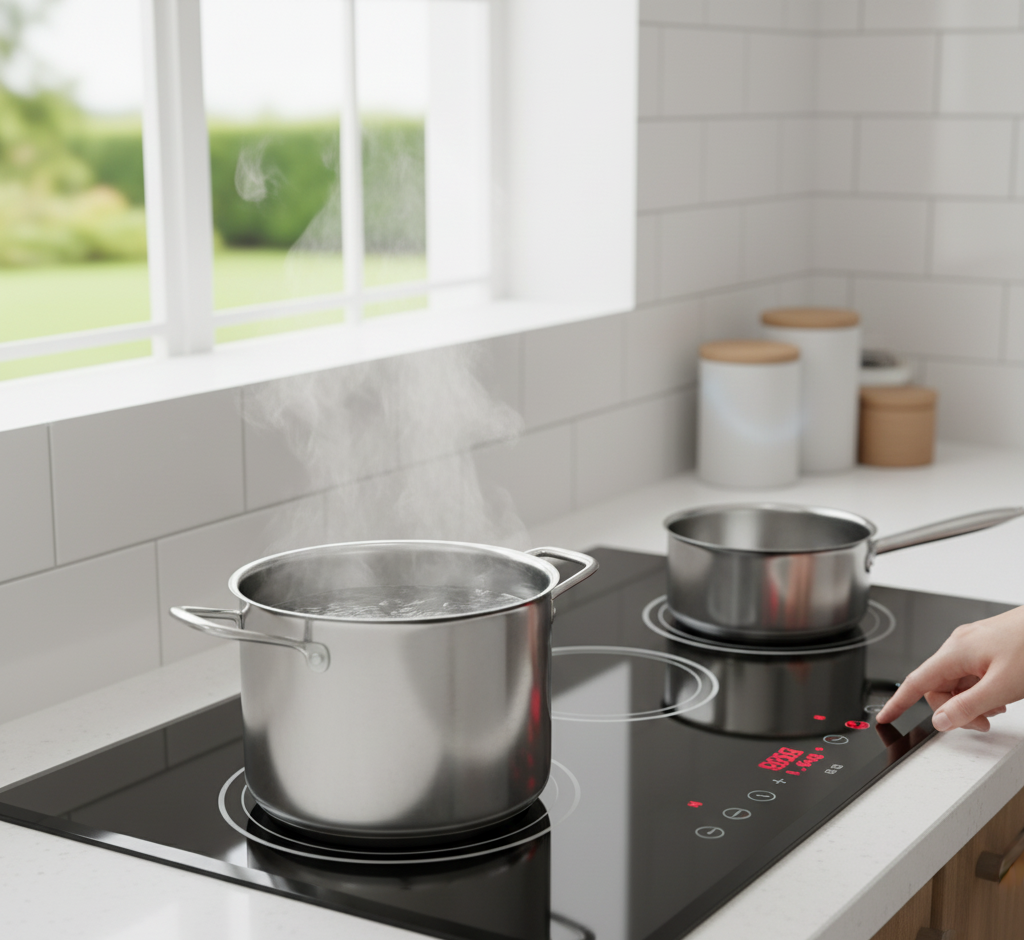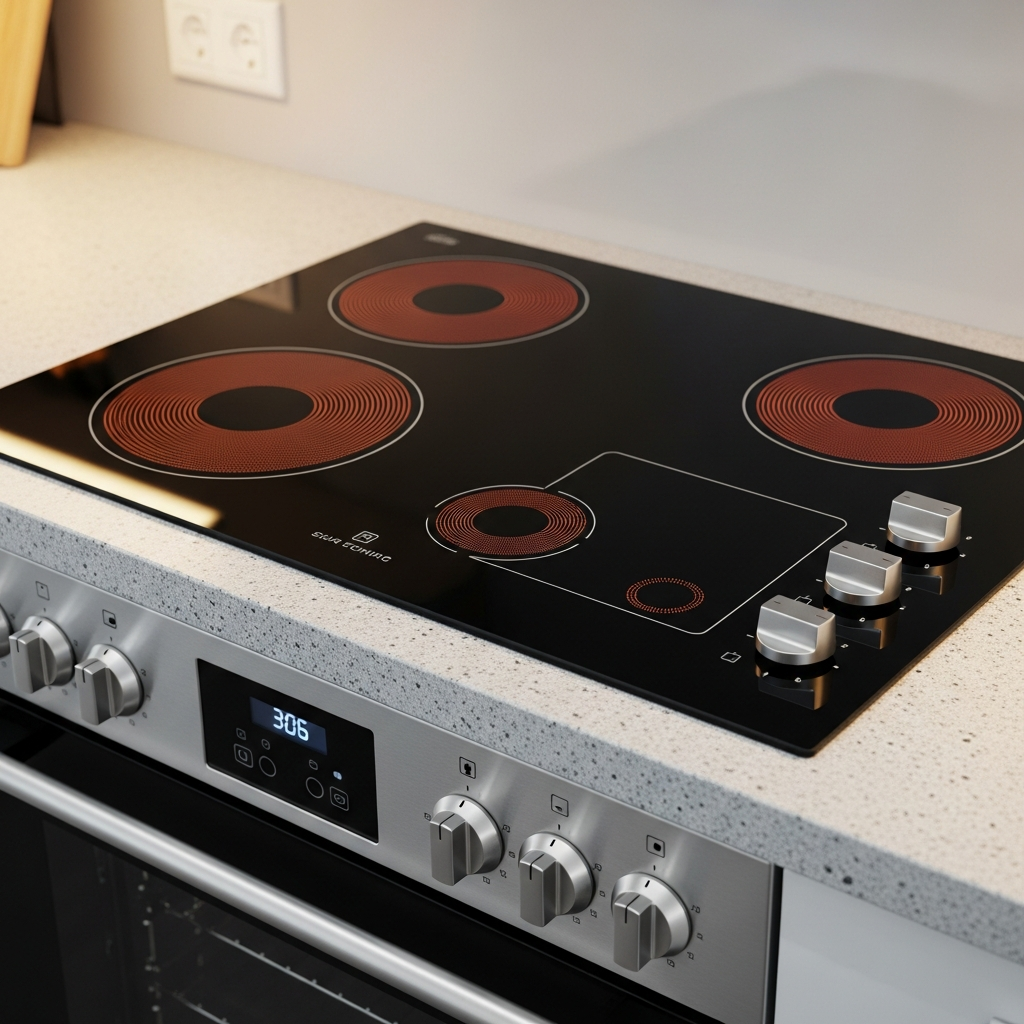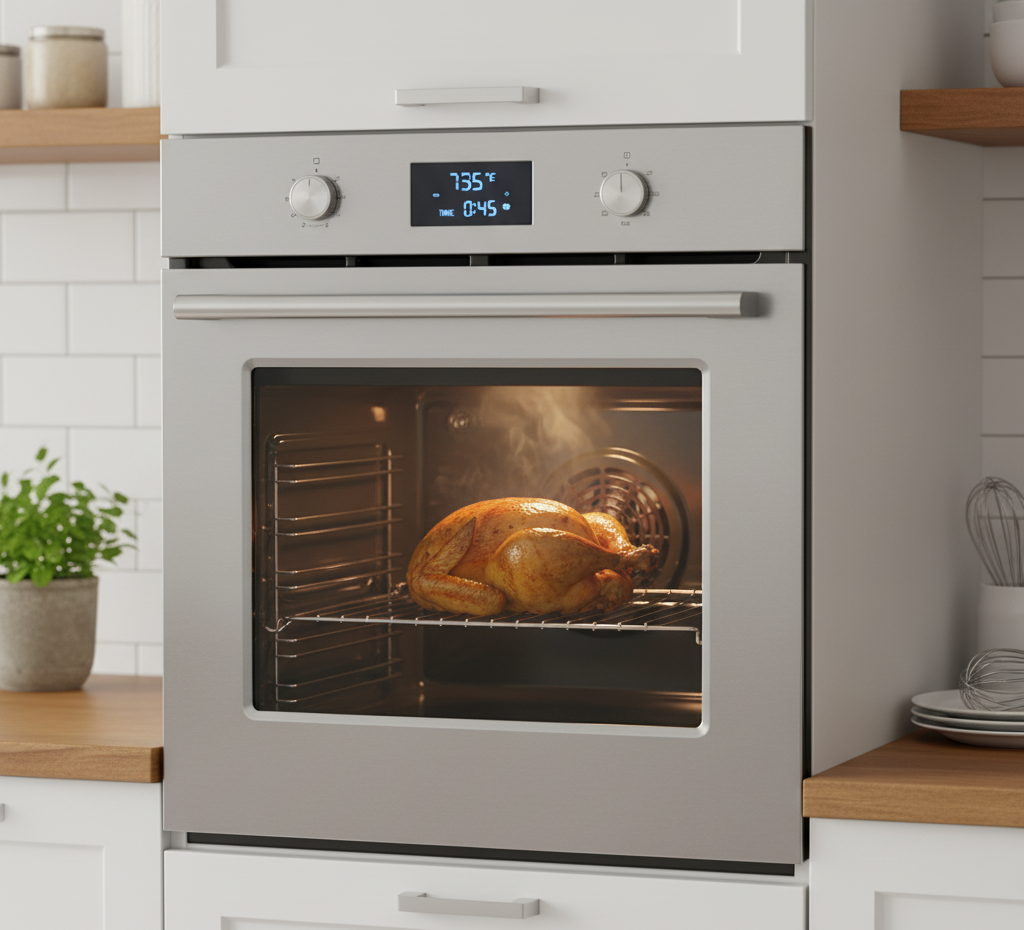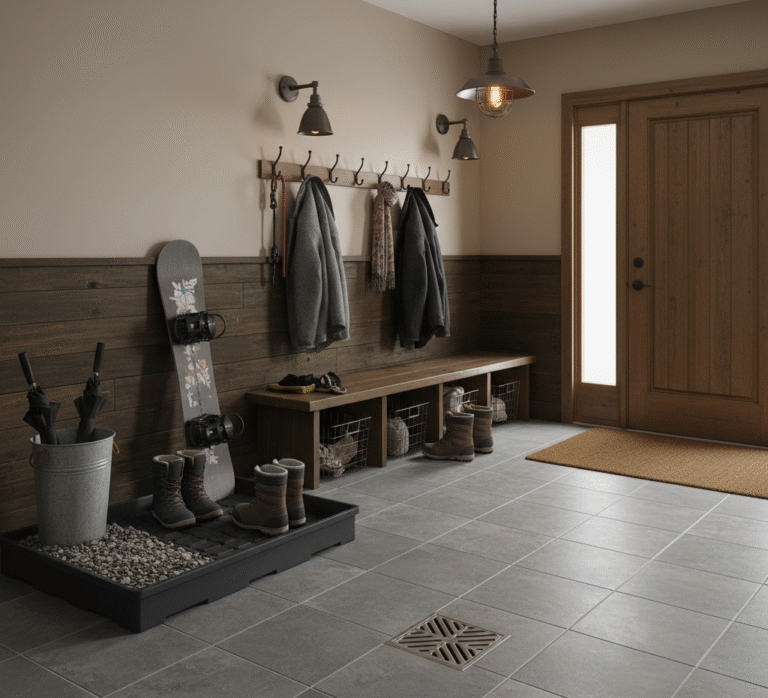The stove is the undeniable workhorse of the kitchen, the command center where raw ingredients are transformed into meals. It is also, by nature of its function, the appliance most prone to filth. Every splatter of oil, every boil-over of pasta water, and every dropped crumb contributes to a layer of grime that, if left unchecked, hardens into a substance nearly as tough as the metal it sits upon. Cleaning a stove is not merely a matter of aesthetics; it is a matter of safety and efficiency. A grease-laden stovetop is a fire hazard, and clogged burner ports result in uneven heating that ruins food. Yet, despite its importance, stove cleaning is often performed incorrectly, with homeowners using the wrong chemicals on the wrong surfaces, scratching delicate glass, or neglecting the hidden areas where grease accumulates the most. Mastering the art of stove maintenance requires understanding the specific materials you are working with—whether it is tempered glass, cast iron, or enamel—and applying the right chemical and mechanical leverage to remove residue without causing damage.
1.Glass-Ceramic Cooktop
The glass-ceramic cooktop, a staple of modern kitchens, presents a unique paradox: it is the sleekest surface to look at but often the most frustrating to maintain. The smooth, black surface shows every fingerprint and dust mote, but the real enemy is burnt-on food. A common mistake is attacking these surfaces with abrasive scouring pads. The rough side of a standard kitchen sponge is practically sandpaper to a glass cooktop. Over time, this creates a haze of micro-scratches that dulls the finish and, more importantly, traps dirt, making future cleaning even harder. The correct tool for a glass top is not a scrubber, but a razor blade scraper. When food is burnt onto the surface—especially sugary substances which can actually pit the glass if left to cool—a metal scraper held at a forty-five-degree angle is the only way to physically shear the carbon off without damaging the substrate. This should be done while the surface is wet with a specific glass cooktop cleaner or a paste of baking soda and water, which acts as a lubricant. The goal is to lift the debris, not grind it into the glass. Polishing with a dry microfiber cloth afterwards is what restores the shine, but the heavy lifting is done by the blade.

2.Gas Stove
Gas ranges offer a completely different set of challenges, primarily centered around the heavy, cast-iron grates. These grates are porous and subjected to direct flame, meaning that grease spills are baked into the iron almost instantly. Scrubbing these by hand at the sink is a labor-intensive task that rarely yields perfect results. The structure of the grates, with their many corners and rough texture, shreds sponges and resists brushes. The most effective method for cleaning heavy cast iron grates utilizes the chemistry of ammonia fumes. By placing the grates inside a heavy-duty garbage bag with a splash of ammonia and sealing it tight for twenty-four hours, you allow the fumes to penetrate the grease. The ammonia breaks down the bond between the carbonized food and the iron. When you open the bag the next day—preferably outside to avoid inhaling the strong fumes—the grime usually wipes off with minimal scrubbing. This method saves hours of physical labor. It is important, however, to rinse them thoroughly and dry them completely, perhaps even placing them in a warm oven for a few minutes, to prevent rust from forming on the exposed iron.
Beneath the grates lie the burner caps and heads, the actual machinery of the gas stove. If your flame is yellow instead of blue, or if the ignition clicks incessantly before lighting, the cause is almost always a clogged port. Food spills can block the tiny holes where gas escapes, disrupting the flow and air mixture. Cleaning these requires precision, not brute force. A straightened paper clip or a needle can be used to gently clear the ports, but one must be careful not to break the metal tip off inside the hole. The burner heads themselves can be soaked in warm soapy water, but the electrical igniter—the little ceramic nub that sparks—must remain dry. If this ceramic piece gets wet or coated in cleaner, the stove will not light until it has dried out completely. Reassembling the burners requires checking the alignment; a cap that sits slightly askew will result in a dangerous, uneven flame that can flare up unexpectedly.
3.Electric Stove
Electric coil stoves, often seen in older apartments, are frequently neglected because they seem difficult to disassemble, but they are actually the most modular of all designs. The coils themselves rarely need cleaning because they get hot enough to burn off most residue, but the drip pans beneath them are magnets for disaster. These metal bowls catch everything that falls through the coils. When they are coated in black, carbonized grease, they become a smoke generator every time the stove is turned on. While many people wrap these in aluminum foil to avoid cleaning them, this is a dangerous practice that can trap heat and melt the wiring or cause a short circuit. Drip pans are inexpensive and should be viewed as semi-disposable. If they are rusted or hopelessly caked, replacing them is safer and more effective than scrubbing. If they are salvageable, they should be removed and boiled in a mixture of water and vinegar to loosen the charred remains. The coils themselves pull out, but one must be careful never to submerge the electrical contacts in water.

4.Control Panel and Buttons
The control panel and knobs are the most touched but often the least cleaned parts of the stove. Because they are usually located above the cooking surface or on the front face, they are constantly bombarded with microscopic grease splatters. Over time, this grease works its way behind the knobs, acting as a glue that makes them difficult to turn. To clean this area effectively, the knobs must be pulled off. Simply wiping around them pushes dirt into the mechanism. Once the knobs are removed, the stems can be cleaned with a degreaser. However, caution is required with the control panel itself, especially if it is digital. Spraying cleaner directly onto the buttons or screen is a mistake. The liquid can seep behind the bezel and short out the circuit board, leading to expensive repairs. The cleaner should always be sprayed onto a cloth first, which is then used to wipe the surface.
5.Oven
Then there is the oven itself, a cavern of baked-on misery. Most modern ovens come with a “self-clean” feature, but using it is often a mistake. The self-clean cycle heats the oven to extreme temperatures, often exceeding nine hundred degrees Fahrenheit, to incinerate food residue into ash. While this sounds convenient, the reality is often smoky, smelly, and risky. The extreme heat can fry the sensitive electronic control boards found in modern appliances, and the fumes released from burning Teflon-coated racks or polymerized grease can be toxic to pets, particularly birds. A manual clean is far safer and often more effective. A paste made of baking soda and water, spread over the interior surfaces and left to sit overnight, works miracles. The baking soda is alkaline, which helps to break down the acidic grease and food soils. The next day, spraying vinegar over the dried paste creates a foaming reaction that lifts the grime, allowing it to be scrubbed away with a nylon brush. This method requires patience rather than high heat, but it preserves the lifespan of the appliance.

6.Oven Racks
The oven racks are another component that struggles to fit in the kitchen sink. Trying to scrub them halfway submerged usually leads to water all over the floor and scratched stainless steel. The bathtub is the secret weapon here. Laying old towels down in the tub to protect the porcelain, placing the racks on top, and covering them with hot water and dissolved dishwasher detergent or laundry soap creates a massive soaking tank. The enzymes in the detergent break down the proteins and fats over several hours. By the time you return, the burnt-on cheese and meat juices will have softened enough to be wiped away with a sponge, restoring the racks to a shiny silver without the back-breaking scrubbing.
7.Window Glass
The glass window of the oven door is the window into the culinary soul, but it is often brown and opaque. This brown stain is polymerized grease. Many people avoid scrubbing it for fear of scratching the glass or damaging the seal. However, the glass is tempered and quite durable. The same baking soda paste used for the interior works well here, but for stubborn spots, a flat razor blade scraper—used carefully and kept wet—is incredibly effective at peeling off the layers of grease. Sometimes, streaks appear that seem impossible to wipe away because they are actually inside the door, between the two panes of glass. This occurs because the door is vented to allow airflow. Cleaning this requires a level of disassembly that should be approached with caution, often involving removing the door from its hinges and unscrewing the layers. For most, focusing on the exterior and interior surfaces is sufficient to monitor the baking process.

8.Exhaust Fan
The range hood and its filters are functionally part of the stove ecosystem, even if they are separate units. The hood is responsible for sucking up smoke, steam, and airborne grease. If the metal mesh filters are clogged, that grease has nowhere to go but back down onto the stovetop and the surrounding cabinetry. A sticky, yellow film on the top of the fridge or the upper cabinets is a sign of a failed hood filter. These filters should be washed monthly. They are often dishwasher safe, but a soak in boiling water with a heavy-duty degreaser or baking soda is more effective at cutting through the thick, sticky resin that forms. If the filter is charcoal-based (for non-vented hoods), it cannot be cleaned and must be replaced regularly to maintain any level of air quality.
9.Prevention
Prevention is the final and most important aspect of stove maintenance. The habit of wiping up spills immediately, before the surface cools, prevents the carbonization process that makes cleaning so difficult later. Sugary spills on glass cooktops must be removed instantly, as they contract when cooling and can rip the glass surface. Using splatter screens when frying reduces the airborne grease load significantly. Lining the bottom of the oven with foil is a common trick, but it must be done correctly; blocking the airflow vents with foil can cause carbon monoxide buildup or overheat the heating element, causing it to snap. It is better to use a dedicated, non-stick oven liner that is sized correctly for the floor of the appliance.

10.Patience
Cleaning a stove is a science of solvency and abrasion. It is about matching the pH of the cleaner to the type of soil—alkalines for acids and fats—and using the right mechanical force for the substrate. It is a task that cannot be rushed. The chemicals need dwell time to work; the soaking needs hours to penetrate. When rushed, homeowners resort to harsh scouring pads and knives that leave permanent damage. A scratched stovetop is not just ugly; it is harder to clean next time, as dirt settles into the grooves. By respecting the materials and understanding the chemistry of the mess, the stove can remain a pristine, efficient tool rather than a source of kitchen shame.
Maintaining a household involves a thousand such details, and the stove is just one piece of the puzzle. Deep cleaning a kitchen requires time, physical effort, and specific knowledge of appliances and materials that many busy homeowners simply do not have. When the layers of grease feel insurmountable, or when you simply want to reset your home to a baseline of perfection, professional help is the answer. Toronto Shine Cleaning offers a level of service that goes far beyond the surface wipe-down. Just as we have explored the intricate details of stove maintenance, Toronto Shine Cleaning applies that same rigorous attention to every corner of your home. Whether it is degreasing the range hood, revitalizing the oven interior, or ensuring your entire living space sparkles, their professional team has the tools and expertise to handle the heavy lifting.


















